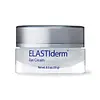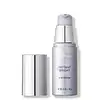What's inside
What's inside
 Key Ingredients
Key Ingredients

 Benefits
Benefits

 Concerns
Concerns

 Ingredients Side-by-side
Ingredients Side-by-side

Water
Skin ConditioningC12-15 Alkyl Benzoate
AntimicrobialEthylhexyl Palmitate
EmollientC13-15 Alkane
SolventCyclopentasiloxane
EmollientGlycerin
HumectantGlyceryl Stearate
EmollientPEG-100 Stearate
Propylene Glycol
HumectantStearyl Alcohol
EmollientDipropylene Glycol Dibenzoate
EmollientDimethicone
EmollientPPG-15 Stearyl Ether Benzoate
EmollientPolyacrylamide
Cetyl Alcohol
EmollientCetyl Dimethicone
EmollientC13-14 Isoparaffin
EmollientXanthan Gum
EmulsifyingMagnesium Aluminum Silicate
AbsorbentLaureth-7
EmulsifyingTocopheryl Acetate
AntioxidantGlycyrrhiza Glabra Root Extract
BleachingAlgae Extract
EmollientVaccinium Angustifolium Fruit Extract
Skin ProtectingPhenoxyethanol
PreservativeMethylparaben
PreservativeEthylparaben
PreservativeButylparaben
MaskingPropylparaben
PreservativeIsobutylparaben
AntimicrobialHdi/Trimethylol Hexyllactone Crosspolymer
Sodium Hydroxide
BufferingMalonic Acid
BufferingMalachite
Skin ConditioningZinc Carbonate
Silica
AbrasiveTalc
AbrasiveAlumina
AbrasiveMica
Cosmetic ColorantCI 77891
Cosmetic ColorantCI 77491
Cosmetic ColorantCI 42090
Cosmetic ColorantWater, C12-15 Alkyl Benzoate, Ethylhexyl Palmitate, C13-15 Alkane, Cyclopentasiloxane, Glycerin, Glyceryl Stearate, PEG-100 Stearate, Propylene Glycol, Stearyl Alcohol, Dipropylene Glycol Dibenzoate, Dimethicone, PPG-15 Stearyl Ether Benzoate, Polyacrylamide, Cetyl Alcohol, Cetyl Dimethicone, C13-14 Isoparaffin, Xanthan Gum, Magnesium Aluminum Silicate, Laureth-7, Tocopheryl Acetate, Glycyrrhiza Glabra Root Extract, Algae Extract, Vaccinium Angustifolium Fruit Extract, Phenoxyethanol, Methylparaben, Ethylparaben, Butylparaben, Propylparaben, Isobutylparaben, Hdi/Trimethylol Hexyllactone Crosspolymer, Sodium Hydroxide, Malonic Acid, Malachite, Zinc Carbonate, Silica, Talc, Alumina, Mica, CI 77891, CI 77491, CI 42090
Water
Skin ConditioningDimethicone
EmollientGlycerin
HumectantButylene Glycol
HumectantHdi/Trimethylol Hexyllactone Crosspolymer
Polysilicone-11
Ethylhexyl Olivate
Skin ConditioningBoron Nitride
AbsorbentSodium Acrylate/Sodium Acryloyldimethyl Taurate Copolymer
Emulsion StabilisingPhenylethyl Resorcinol
AntioxidantPolymethylsilsesquioxane
Phenoxyethanol
PreservativeAlbizia Julibrissin Bark Extract
MaskingDecyl Glucoside
CleansingCaffeine
Skin ConditioningIsohexadecane
EmollientVitis Vinifera Flower Cell Extract
MaskingHydroxyacetophenone
AntioxidantTrehalose
HumectantUrea
BufferingPentylene Glycol
Skin ConditioningPolysorbate 80
EmulsifyingSucrose Palmitate
EmollientSea Water
HumectantCaprylyl Glycol
EmollientSclareolide
MaskingDisodium EDTA
Tromethamine
BufferingDiethylhexyl Syringylidenemalonate
Skin ProtectingEthylhexylglycerin
Skin ConditioningSqualane
EmollientTocopheryl Acetate
AntioxidantPolysorbate 60
EmulsifyingSilica
AbrasiveSerine
MaskingLecithin
EmollientSucrose
HumectantPlankton Extract
Skin ConditioningPropanediol
SolventSodium Hyaluronate
HumectantAlteromonas Ferment Extract
Skin ConditioningSodium Hyaluronate Crosspolymer
HumectantSodium Chloride
MaskingPullulan
Disodium Phosphate
BufferingAlgin
MaskingGlyceryl Polyacrylate
Hydrolyzed Hyaluronic Acid
HumectantCaprylic/Capric Triglyceride
MaskingPorphyridium Cruentum Extract
Skin ConditioningPotassium Sorbate
PreservativePotassium Phosphate
BufferingSigesbeckia Orientalis Extract
Skin ConditioningCitric Acid
BufferingWater, Dimethicone, Glycerin, Butylene Glycol, Hdi/Trimethylol Hexyllactone Crosspolymer, Polysilicone-11, Ethylhexyl Olivate, Boron Nitride, Sodium Acrylate/Sodium Acryloyldimethyl Taurate Copolymer, Phenylethyl Resorcinol, Polymethylsilsesquioxane, Phenoxyethanol, Albizia Julibrissin Bark Extract, Decyl Glucoside, Caffeine, Isohexadecane, Vitis Vinifera Flower Cell Extract, Hydroxyacetophenone, Trehalose, Urea, Pentylene Glycol, Polysorbate 80, Sucrose Palmitate, Sea Water, Caprylyl Glycol, Sclareolide, Disodium EDTA, Tromethamine, Diethylhexyl Syringylidenemalonate, Ethylhexylglycerin, Squalane, Tocopheryl Acetate, Polysorbate 60, Silica, Serine, Lecithin, Sucrose, Plankton Extract, Propanediol, Sodium Hyaluronate, Alteromonas Ferment Extract, Sodium Hyaluronate Crosspolymer, Sodium Chloride, Pullulan, Disodium Phosphate, Algin, Glyceryl Polyacrylate, Hydrolyzed Hyaluronic Acid, Caprylic/Capric Triglyceride, Porphyridium Cruentum Extract, Potassium Sorbate, Potassium Phosphate, Sigesbeckia Orientalis Extract, Citric Acid
 Reviews
Reviews

Ingredients Explained
These ingredients are found in both products.
Ingredients higher up in an ingredient list are typically present in a larger amount.
Dimethicone is a type of synthetic silicone created from natural materials such as quartz.
What it does:
Dimethicone comes in different viscosities:
Depending on the viscosity, dimethicone has different properties.
Ingredients lists don't always show which type is used, so we recommend reaching out to the brand if you have questions about the viscosity.
This ingredient is unlikely to cause irritation because it does not get absorbed into skin. However, people with silicone allergies should be careful about using this ingredient.
Note: Dimethicone may contribute to pilling. This is because it is not oil or water soluble, so pilling may occur when layered with products. When mixed with heavy oils in a formula, the outcome is also quite greasy.
Learn more about DimethiconeGlycerin is already naturally found in your skin. It helps moisturize and protect your skin.
A study from 2016 found glycerin to be more effective as a humectant than AHAs and hyaluronic acid.
As a humectant, it helps the skin stay hydrated by pulling moisture to your skin. The low molecular weight of glycerin allows it to pull moisture into the deeper layers of your skin.
Hydrated skin improves your skin barrier; Your skin barrier helps protect against irritants and bacteria.
Glycerin has also been found to have antimicrobial and antiviral properties. Due to these properties, glycerin is often used in wound and burn treatments.
In cosmetics, glycerin is usually derived from plants such as soybean or palm. However, it can also be sourced from animals, such as tallow or animal fat.
This ingredient is organic, colorless, odorless, and non-toxic.
Glycerin is the name for this ingredient in American English. British English uses Glycerol/Glycerine.
Learn more about GlycerinThis ingredient is a powder used to improve texture, slip, and give products a silky texture.
Phenoxyethanol is a preservative that has germicide, antimicrobial, and aromatic properties. Studies show that phenoxyethanol can prevent microbial growth. By itself, it has a scent that is similar to that of a rose.
It's often used in formulations along with Caprylyl Glycol to preserve the shelf life of products.
Silica, also known as silicon dioxide, is a naturally occurring mineral. It is used as a fine, spherical, and porous powder in cosmetics.
Though it has exfoliant properties, the function of silica varies depending on the product.
The unique structure of silica enhances the spreadability and adds smoothness, making it a great texture enhancer.
It is also used as an active carrier, emulsifier, and mattifier due to its ability to absorb excess oil.
In some products, tiny microneedles called spicules are made from silica or hydrolyzed sponge. When you rub them in, they lightly polish away dead skin layers and enhance the penetration of active ingredients.
Learn more about SilicaTocopheryl Acetate is AKA Vitamin E. It is an antioxidant and protects your skin from free radicals. Free radicals damage the skin by breaking down collagen.
One study found using Tocopheryl Acetate with Vitamin C decreased the number of sunburned cells.
Tocopheryl Acetate is commonly found in both skincare and dietary supplements.
Learn more about Tocopheryl AcetateWater. It's the most common cosmetic ingredient of all. You'll usually see it at the top of ingredient lists, meaning that it makes up the largest part of the product.
So why is it so popular? Water most often acts as a solvent - this means that it helps dissolve other ingredients into the formulation.
You'll also recognize water as that liquid we all need to stay alive. If you see this, drink a glass of water. Stay hydrated!
Learn more about Water